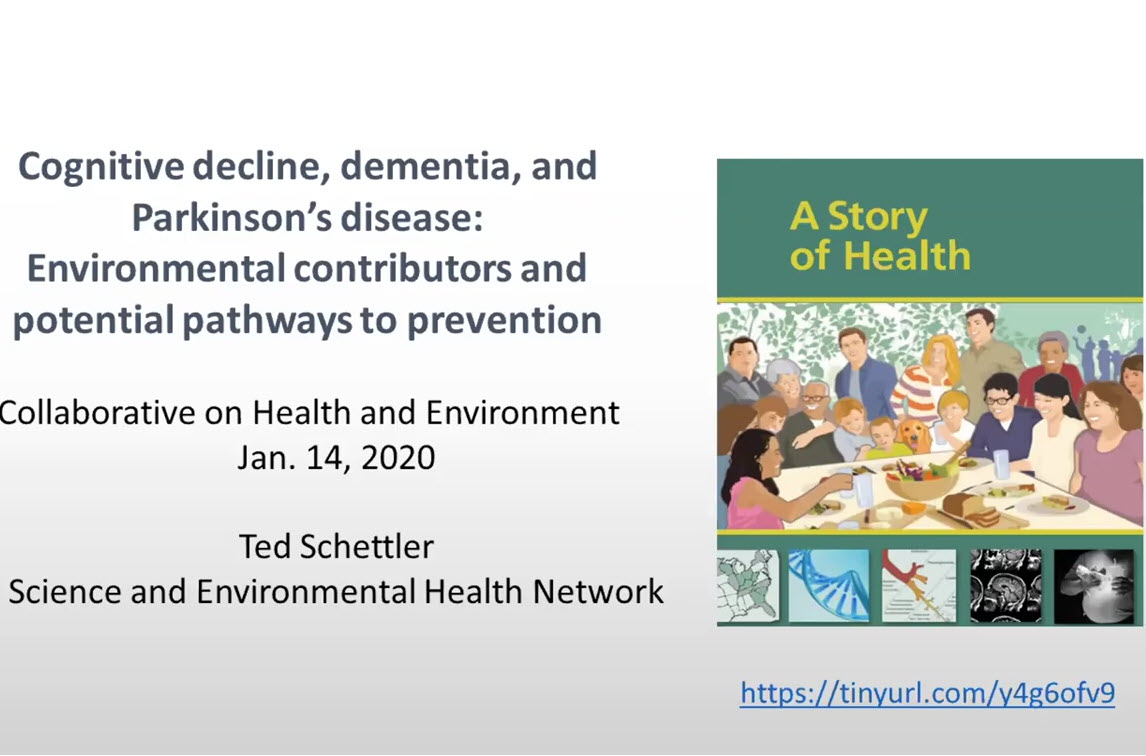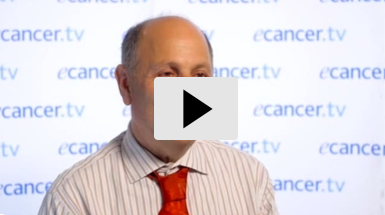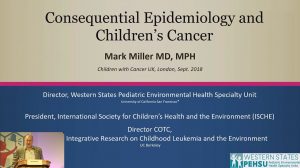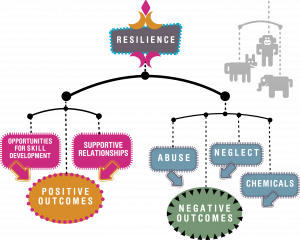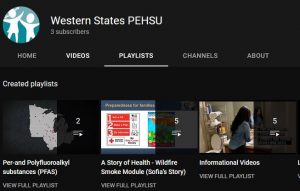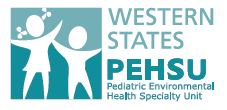Video Resources
Cognitive Decline, Dementia, and Parkinson’s Disease: Environmental Contributors and Potential Pathways to Prevention
In this webinar WSPEHSU staff Samuel Goldman, MD, MPH, and Mark Miller, MD, MPH, and Science and Environmental Health Network (SEHN) Science Director, Ted Schettler, MD, MPH, discuss the newest and fifth chapter of A Story of Health eBook, Sam’s Story. Meet 72-year-old Sam, his family, and friends as they try to understand Sam’s apparent cognitive decline that begins after his wife dies and what might be done to address it. The presenters discuss environmental influences on Parkinson’s and Alzheimer’s diseases and the role of gene-environment interactions. They address exposures to solvents, pesticides, air pollution, and lead, across the life course. The effects of psychosocial and socioeconomic stressors and the latest science on pathways of neurodegeneration are covered briefly. Dr. Goldman addresses head injuries, cognitive impairment and Parkinson’s. The webinar features graphics and illustrations from the eBook to illustrate where and how we live, work, and play can influence health across the lifespan
Little Things Matter: The Impact of Toxins on the Developing Brain
State of the Science Review on Childhood Leukemia and Environmental Risk Factors
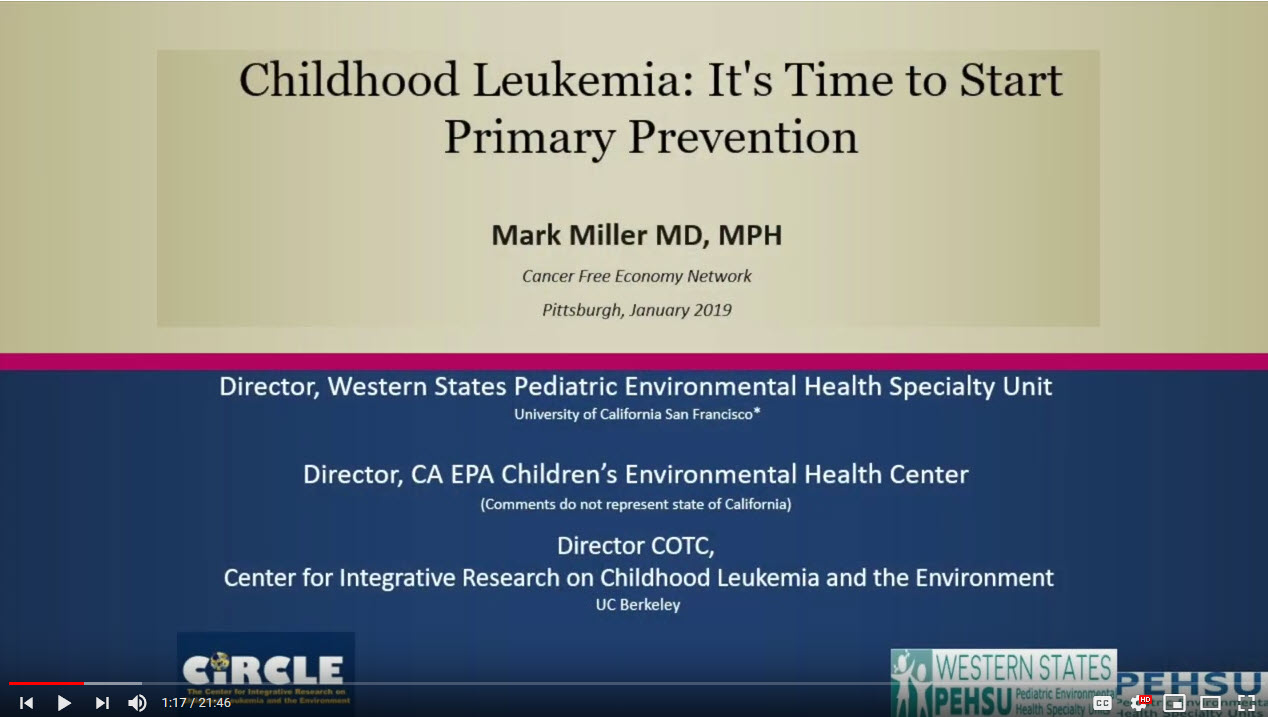
In this 2019 video, at the Cancer Free Economy Network Conference in Pittsburgh, Mark Miller, MD, MPH, WSPEHSU Co-Director, reviews the evidence regarding childhood leukemia risks and environmental exposures at the 2019 Cancer and the Environment Symposium. He discusses increased risks of childhood leukemia associated with exposures to pesticides, tobacco smoke, solvents, and traffic-related pollution and reduced risks associated with adequate folate before conception and early in pregnancy, breastfeeding, and early exposure to routine childhood infections. He argues that waiting for complete scientific evidence for decision-making will result in significant delays in safeguarding children’s health.
Dr. Miller Interviewed about Childhood Leukemia and Environmental Risk Factors
Dr Miller meets with ecancertv at Childhood Cancer 2016 to discuss a survey of healthcare providers that revealed a gap in information about environmental risk factors for childhood cancer. Air pollution, folate levels and tobacco use are among the factors that affect family’s risk even pre-conception. Dr Miller describes the need for wider awareness and public engagement by oncologists on regional and national levels to communicate preventative behaviors more fully.
NIEHS/EPA Children’s Environmental Health and Disease Prevention Research Centers

The Children’s Environmental Health Centers website has links to various multimedia resources including webinars, videos, and audio files.
Cause or Cure?
WSPEHSU Co-director, Mark Miller, along with colleagues Catherine Metayer and Todd Whitehead at the Center for Integrative Research on Childhood Leukemia and the Environment (CIRCLE), consulted with Bruce Lanphear on the next in his series of innovative videos on key concepts in environmental health, Cause or Cure? The video highlights the importance of addressing prevention of childhood leukemia and other cancers rather than just focusing on treatment.
CHILDREN’S ENVIRONMENTAL HEALTH SYMPOSIA
The California Environmental Protection Agency (CalEPA), Office of Environmental Health Hazard Assessment (OEHHA), along with the Western States Pediatric Environmental Health Specialty Unit (WSPEHSU), and the UC Berkeley Center for Integrative Research on Childhood Leukemia and the Environment (CIRCLE), have for a number of years sponsored an annual symposium on children’s environmental health. These symposia are conducted as part of the Children’s Environmental Health Program.
- 2018- Air Pollution and Life Course Neurological Impacts: potential factors underlying children’s unique vulnerabilities to the cumulative impacts of pollution and socioeconomic and community stressors
- 2017- Environmental Justice and Children: The symposium was held April 26, 2017 and examined the potential factors underlying children’s unique vulnerabilities to the cumulative impacts of pollution and socioeconomic and community stressors
- The WSPEHSU also collaborated on a Children’s Environmental Health Symposium in Hawaii. Powerpoint slides and resources here.
- 2016- Current Findings in Children’s Environmental Health from California
- 2015- Impacts of Climate Change on Children’s Health
- 2013- Effects of cumulative environmental exposures on children’s health: children’s exposure to chemicals, how the environment changes the development of the brain and nervous system in children and childhood leukemia
- 2012- Measuring children’s exposure to chemicals, effects of air pollution on immune function and asthma, how the environment changes the development of the brain and nervous system in children, and childhood leukemia
Consequential Epidemiology and Children’s Cancer
Children with Cancer UK International Scientific and Medical Conference
Mark Miller, M.D., MPH
September 14, 2018
Dr. Miller discusses strategies for translating childhood leukemia research into clinical practice, including the need to reduce ongoing exposures to identified environmental toxic agents. View video of the presentation.
Pediatric Environmental Health Toolkit Training Module
PEDIATRIC ENVIRONMENTAL HEALTH VIDEOS and Prior TOOLKIT (PEHT) TRAINING MODULE
The PEHT Training Module can be found here. This module was created in association with a former edition of the PEHT (2nd edition), yet the environmental content contained within remains relevant. It reviews children’s unique vulnerabilities to environmental hazards, sources of exposure, and offers suggestions for incorporating anticipatory guidance in well-child visits.
Videos associated with the modules are also linked from the WSPEHSU YouTube account.
Childhood Development, Resilience and the Environment
This program examines critical time windows during development that may enhance social stressors and chemical exposures resulting in profound effects on an individual. Interactions among family, social support systems, and the larger community, access to good nutrition, healthy homes, and positive work and play environments are all important and contribute to resilience. These ideas build a framework for understanding environmental justice and how it addresses systematic disparities in exposures to environmental hazards based on race, ethnicity, or socioeconomic/societal standings that may impact people’s health. Click here to view the full page and access Continuing Education Credit information.
